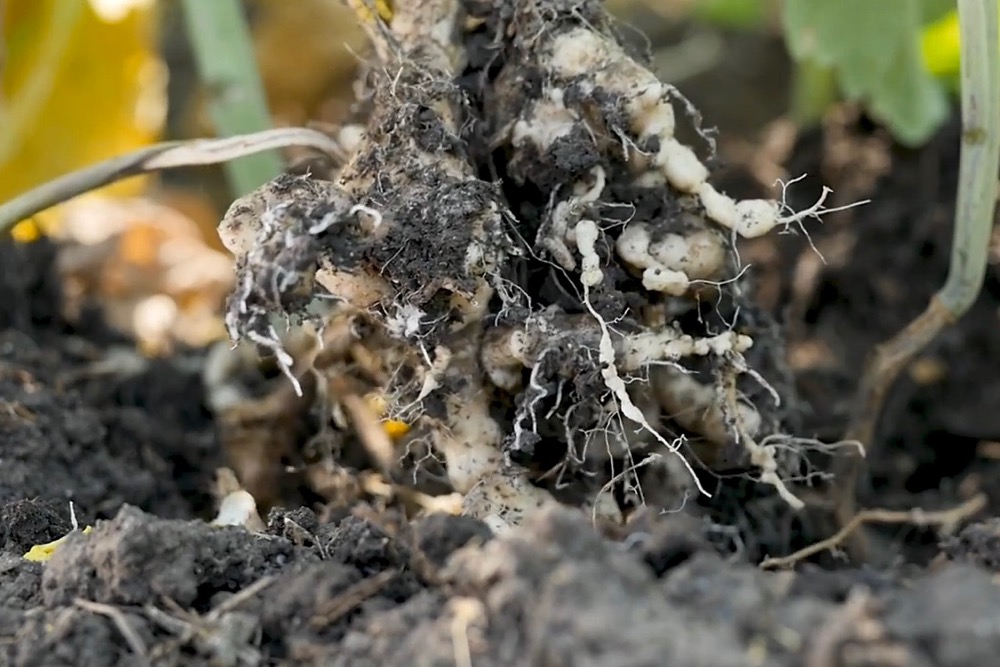A new variety of canola with “intermediate” resistance to a new type of clubroot may be cause for optimism, but Alberta’s canola grower group says farmers need to know more before they buy.
The Alberta Canola Producers Commission (ACPC) warned Monday that growers will need more specifics about claims that a new canola variety has “intermediate resistance” to clubroot pathotype 5x.
ACPC didn’t name the variety Monday, but Canterra Seeds on Jan. 21 rolled out CS2000, a Genuity Roundup Ready hybrid canola it bills as suitable for all growing zones, with “R” (resistant) ratings for both blackleg and clubroot.
Read Also

Prairie Wheat Weekly: Modest increases for cash prices
Spring wheat and durum cash prices were moderately higher across the Canadian Prairies for the week ended Dec. 19. This was despite losses in Chicago and Kansas City wheat and Agriculture and Agri-Food Canada projecting larger all wheat ending stocks for 2025/26. Minneapolis wheat bumped up on the week, lending some support to Canadian cash prices.
Specifically, Winnipeg-based Canterra is promoting CS2000 as resistant to existing clubroot pathotypes 2,3,5,6 and 8 — and with “intermediate” resistance to a newly-identified pathotype, 5x.
CS2000, the company said in a recent technical bulletin, is “currently the only hybrid on the market to have shown tolerance to this pathotype.”
Canterra recently bought the variety from canola breeding firm DL Seeds and plans to have it available for seeding this spring.
Clubroot pathotype 5x was first spotted in 2013 and confirmed last spring in fields in the Edmonton area where some forms of resistance were found to not be working as otherwise expected.
“The fact that some varieties weren’t completely susceptible to the 5x pathogen is encouraging news,” ACPC general manager Ward Toma said Monday in a release. “Up to this point, everything that was exposed to (5x) died, so this result offers evidence that strong resistance may yet be found.”
But in CS2000’s claim, he added, “the confusion arises from the fact that ‘intermediate’ reaction or resistance is a new term for growers.
“While there is an agreed definition of what an intermediate reaction to the pathogen is, there is no general agreement about what an intermediate level of resistance means for yield loss or managing the buildup of resting spores in the soil.”
Canola varieties’ blackleg ratings, by comparison, clearly define “moderate” resistance and “moderate” susceptibility, the commission said.
“Clarity”
The commission said Monday it urged the pathology subcommittee of the Western Canadian Canola/Rapeseed Recommending Committee, the body which handles the protocols around disease ratings for canola, to address this issue.
“Providing clarity will enable growers to understand exactly what is being introduced into the market,” the commission said.
In the meantime, regardless of varieties’ resistance levels, the commission said best management practices for clubroot “continue to be the application of sound rotation and sanitation, in combination with genetic resistance.”
Caused by the soil-borne Plasmodiophora brassicae pathogen, clubroot is established in Canada mainly in vegetable-producing regions of British Columbia, Quebec, Ontario and Atlantic Canada.
In canola, clubroot causes swollen galls to appear on the roots, cutting off the supply of water and nutrients to the plant, causing it to prematurely ripen and die. Typical yield losses run around 50 per cent but can run up to nearly 100 per cent in fields under severe clubroot pressure.
The disease’s first appearance in Canadian canola was in Quebec in 1997, but it took until 2003 for clubroot to turn up on the Prairies, in spots near Edmonton, from which it’s since been spreading. The disease has since been found in isolated cases in Saskatchewan, Manitoba and North Dakota. — AGCanada.com Network














